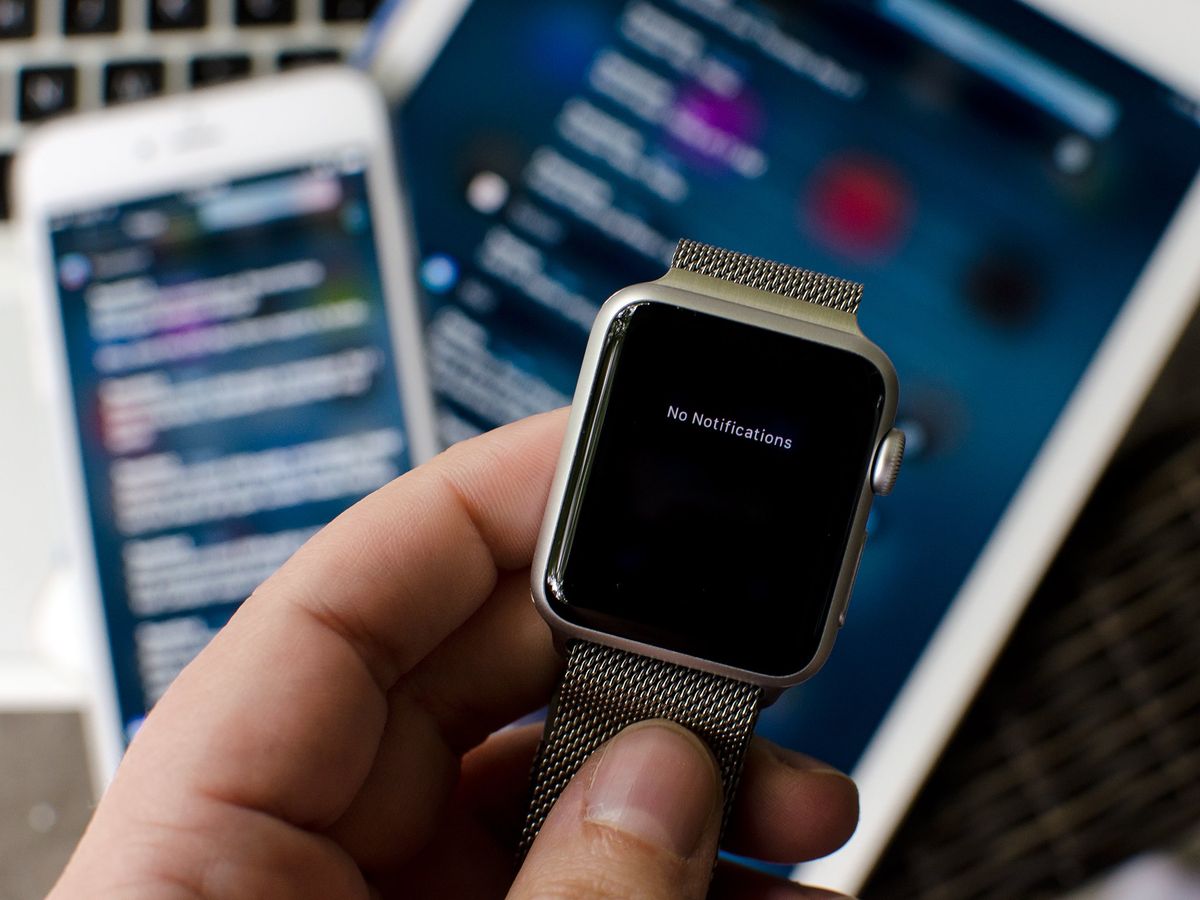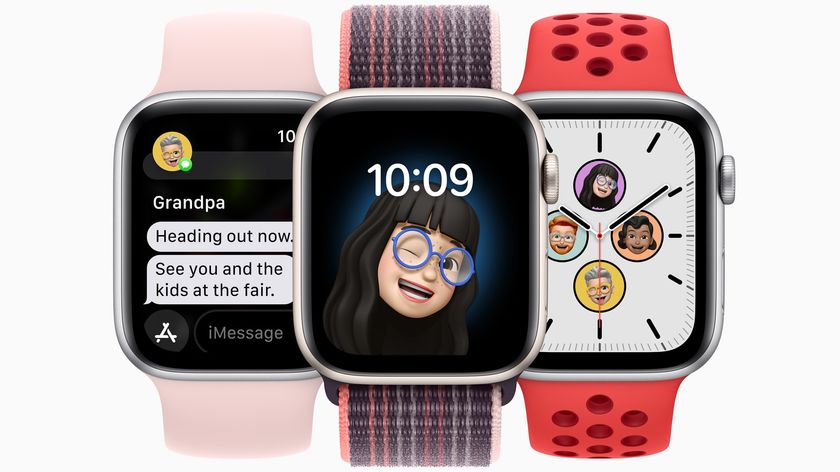How the Apple Watch can help battle your iPhone addiction

Smartphone usage has gotten completely out of hand, though I doubt that's breaking news to anyone. Whether you're sitting at home with your significant other or you're out with friends, you'll see smartphones popping up almost everywhere you look. The time we should spend talking and communicating with one another is instead spent behind glowing screens filled with Twitter, Instagram, Facebook, RSS feeds, and YouTube.
I don't think we mean to get as engrossed as we do, but it happens. I'm guilty of it myself. My iPhone buzzes or beeps and instinct tells me to reach for it. I only intend to respond to a single message, but Twitter grabs my attention, or an incoming email pulls me further down the rabbit hole. It's over; I've checked out of the conversation happening around me.
Putting the smackdown on iPhone notifications
About a year ago I decided to make a conscious effort to seriously limit the amount of time I was spending with technology outside of work hours. I started by whittling down notifications — every device of mine now has its own notification scheme.
My iPad serves two extremes for me: a workhorse for uninterrupted writing while on the go, and a leisure device when lounging around the house. For this reason, my iPad lives in Do Not Disturb mode. I couldn't think of a legitimate reason to receive notifications on my iPad, so I don't.
My iPhone buzzes or beeps, and instinct tells me to reach for it.
My iPhone came next. The first thing I did was strictly limit Lock screen access. Only six apps have access to my Lock screen: Passbook, Fantastical, Todoist, Phone, Messages, and Slack. I based these choices on what is most important during the work day and after. The rest can wait.
To better triage Mail, I've made good use of VIP contacts. I've left badges on for all email, but only VIP contacts play an audible sound. This way I know if I need to check my inbox quickly to see if something needs my attention. Since Messages don't have a VIP system just yet, I've made good use of Do Not Disturb for individual threads and differentiating text tones for important contacts.
Most other apps on my iPhone only have the ability to show a banner while my iPhone is in use. Other than that, I rely on app icon badges. I like these two options because they're the least obtrusive; when I have a few spare minutes to check notifications, badges and banners get my attention, but they don't interrupt what I'm doing.
Master your iPhone in minutes
iMore offers spot-on advice and guidance from our team of experts, with decades of Apple device experience to lean on. Learn more with iMore!
I've made slight changes to notifications on both of my Macs — mainly to block out social media noise. If I'm on a computer, I'm most likely working; as such, messages via Skype, iMessage, Slack, and any other services are fair game. In general, though, I pay much less attention to Mac notifications as a whole when I'm focused. It's never been as big of a problem as iOS notifications are for me.
The breaking point
Since I toned down notifications across my devices, it's been easier to pay more attention to the people around me. As my phone usage lowered, it was much more obvious that I wasn't the only person battling this problem. The first time it hit me was at a family gathering last year: I had been using Do Not Disturb during these kinds of things and setting my iPhone down somewhere, so as not to tempt myself. One particular evening after dinner, we all migrated to the living room. It quickly got very quiet, and I noticed that I was the only person not on my iPhone. After a few minutes of silence, I relented and grabbed my own iPhone. Mission not accomplished.
Unfortunately, this was the first of many incidents. I started to realize that smartphone addiction doesn't limit itself to tech enthusiasts: It extends to almost anyone with a smartphone at their disposal. That isn't to say I don't have a handful of friends and family members who don't have this problem; they're just few and far between these days.
Battling technology... with technology
I was very skeptical of the Apple Watch when it was announced — largely because of these public habits. I had a very brief excursion with a Pebble, but only wore it for a single day before leaving it on my desk to collect dust. Notifications were obtrusive, almost nothing was customizable, and I found it to be more distracting than it was useful.
To my surprise, the Apple Watch has been a delightfully different experience. While my tweaked notification system has been immensely helpful in social situations, it can't prevent me from getting sucked in once I do unlock my iPhone for something important. As much as I try not to, it still happens from time to time. That's where Apple Watch comes in.
It only took a few days to realize how much it was helping me stay off my iPhone. I decided to try and use my Apple Watch as the foremost frontline for notifications. I immediately went into settings and turned off notifications that weren't necessary. I have sounds disabled altogether on my Apple Watch but leave the haptics on at their highest setting.
Life is about interacting with people and the world around us. Technology should only ever play the supporting role.
The haptic system in the Apple Watch is hands down one of its best features. While I notice them, no one else around me does: It's a vastly different experience. They're also not harsh enough to prevent me from ignoring them if I choose to. It allows me to keep my iPhone in a purse or pocket where it won't distract me, or more importantly, anyone else around me. I haven't taken my iPhone off vibrate in weeks, and that's a new experience for me.
My partner also purchased an Apple Watch and immediately found herself having an easier time triaging what really needs her attention as opposed to what just wants it. I've seen her daily stress level plummet, and that makes both of us happy. We're also spending a lot more time talking to each other in the evenings and are both much less concerned with our smartphones. If something really important happens, Apple Watch lets us know. Everything else waits.
Technology is meant to enhance our everyday lives, not take them over. The Apple Watch has quickly brought me back to reality, and I don't think that's an accident. Apple's ad campaign for Apple Watch confirms Apple's intentions: Life is about interacting with people and the world around us. Technology should only ever play the supporting role. The Apple Watch isn't another gadget to connect you to your iPhone, it's meant to help you disconnect.
I'm starting my work days earlier because I'm less concerned with unnecessary notifications. Since I'm less distracted throughout the day, I find myself forgetting less and triaging more. That leaves my nights truly free to do what I'd like without feeling like I should be doing something else. Whether that's enjoying a long visit with my mom, playing a game of cards with my partner, or crushing candies on my iPad, I finally feel like it's my time, and that's a feeling I haven't experienced in a while — and that makes the Apple Watch worth it for me.
While it's helped me tune back into the real world, how someone chooses to utilize the Apple Watch can result in vastly different experiences. So what about you? How do you use your Apple Watch on a day to day basis? Has it helped you disconnect from your iPhone? I'd love to hear about your experiences in the comments below!
iMore senior editor from 2011 to 2015.












